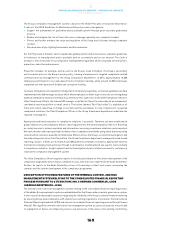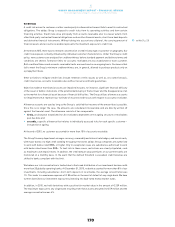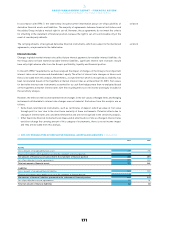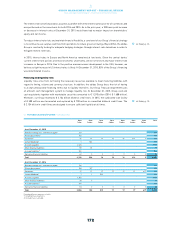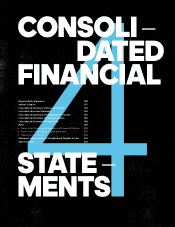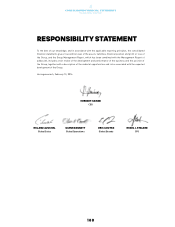Reebok 2015 Annual Report Download - page 174
Download and view the complete annual report
Please find page 174 of the 2015 Reebok annual report below. You can navigate through the pages in the report by either clicking on the pages listed below, or by using the keyword search tool below to find specific information within the annual report.
170
3
GROUP MANAGEMENT REPORT – FINANCIAL REVIEW
Risk and Opportunity Report – Illustration of Material Risks
Credit risks
A credit risk arises if a customer or other counterparty to a financial instrument fails to meet its contractual
obligations. The adidas Group is exposed to credit risks from its operating activities and from certain
financing activities. Credit risks arise principally from accounts receivable and, to a lesser extent, from
other third-party contractual financial obligations such as other financial assets, short-term bank deposits
and derivative financial instruments. Without taking into account any collateral, the carrying amount of
financial assets and accounts receivable represents the maximum exposure to credit risk.
At the end of 2015, there was no relevant concentration of credit risk by type of customer or geography. Our
credit risk exposure is mainly influenced by individual customer characteristics. Under the Group’s credit
policy, new customers are analysed for creditworthiness before standard payment and delivery terms and
conditions are offered. Tolerance limits for accounts receivable are also established for each customer.
Both creditworthiness and accounts receivable limits are monitored on an ongoing basis. Customers that
fail to meet the Group’s minimum creditworthiness are, in general, allowed to purchase products only on
a prepayment basis.
Other activities to mitigate credit risks include retention of title clauses as well as, on a selective basis,
credit insurances, accounts receivable sales without recourse and bank guarantees.
Objective evidence that financial assets are impaired includes, for instance, significant financial difficulty
of the issuer or debtor, indications of the potential bankruptcy of the borrower and the disappearance of an
active market for a financial asset because of financial difficulties. The Group utilises allowance accounts
for impairments that represent our estimate of incurred credit losses with respect to accounts receivable.
Allowance accounts are used as long as the Group is satisfied that recovery of the amount due is possible.
Once this is no longer the case, the amounts are considered irrecoverable and are directly written off
against the financial asset. The allowance consists of two components:
•firstly, an allowance established for all receivables dependent on the ageing structure of receivables
past due date and
•secondly, a specific allowance that relates to individually assessed risks for each specific customer –
irrespective of ageing.
At the end of 2015, no customer accounted for more than 10% of accounts receivable.
The Group Treasury department arranges currency, commodity and interest rate hedges, and invests cash,
with major banks of a high credit standing throughout the world. adidas Group companies are authorised
to work with banks rated BBB+ or higher. Only in exceptional cases are subsidiaries authorised to work
with banks rated lower than BBB+. To limit risk in these cases, restrictions are clearly stipulated, such
as maximum cash deposit levels. In addition, the credit default swap premiums of our partner banks are
monitored on a monthly basis. In the event that the defined threshold is exceeded, credit balances are
shifted to banks compliant with the limit.
We believe our risk concentration is limited due to the broad distribution of our investment business with
more than 20 globally operating banks. At December 31, 2015, no bank accounted for more than 8% of our
investments. Including subsidiaries’ short-term deposits in local banks, the average concentration was
1%. This leads to a maximum exposure of € 83 million in the event of default of any single bank. We have
further diversified our investment exposure by investing into AAA-rated money market funds.
In addition, in 2015, we held derivatives with a positive fair market value in the amount of € 239 million.
The maximum exposure to any single bank resulting from these assets amounted to € 59 million and the
average concentration was 4%.
see Note 29, p. 228


